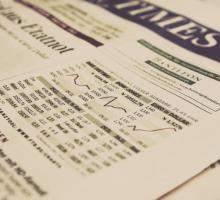Microeconomics studies studies individual units, like families or businesses. Macroeconomics studies economic aggregates.
Microeconomic variables are those patterns or elements that can be used to describe the behavior of a person or an individual economic unit, like a business. A variable is a magnitude that may have different values in different periods of time. Variables are measurements that help to understand the behavior of economic units or the behavior of the economy as whole.
Examples of microeconomic variables:
- Price: the price of a good or service is the amount of money required or given in payment for something.
- Individual expenditure: it’s the amount of money spent. Microeconomics can analyze the expenditure of a family, the expenditure of a business or the expenditure in a single product.
- Quantity demanded: it’s the total amount of good or services that people or businesses are willing to buy at a given time.
- Consumption: it’s the amount of money spent on good or services.
- Quantity produced: it’s the quantity of goods produced by firms in a given period of time.
- Wages: a payment for labor in a given period of time.
- Cost of Inputs: the expenditure incurred to produce a good or service.
- Individual investment: the expenditure that will give benefits in the not immediate future.
- Market share of a business: the percentage of sales by a particular company, with respect to market’s total sales.
A microeconomic model can also use variables like the interest rate, but usually, in microeconomic models, the interest rate is determined externally, outside the model.
Macroeconomics, as opposed to Microeconomics, studies the behavior of economic aggregates.
There exists a relation between microeconomic variables and macroeconomic variables. Many macroeconomics variables are composed of other microeconomic variables. For example, aggregate spending is the sum of all individual spending. A price index is an average of many individual prices. But this doesn’t mean that in order to study macroeconomic variables one should study first the behavior of individual economic units, since macroeconomics models usually make simplifying assumptions.
Many macroeconomic variables are usually periodically measured by government agencies. Like unemployment, GPD or fiscal deficit.



